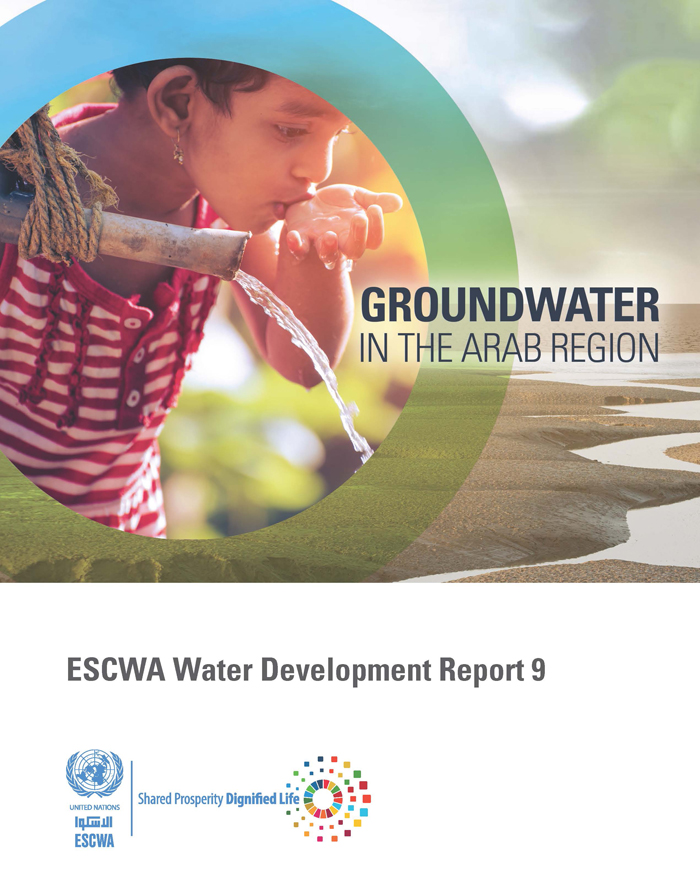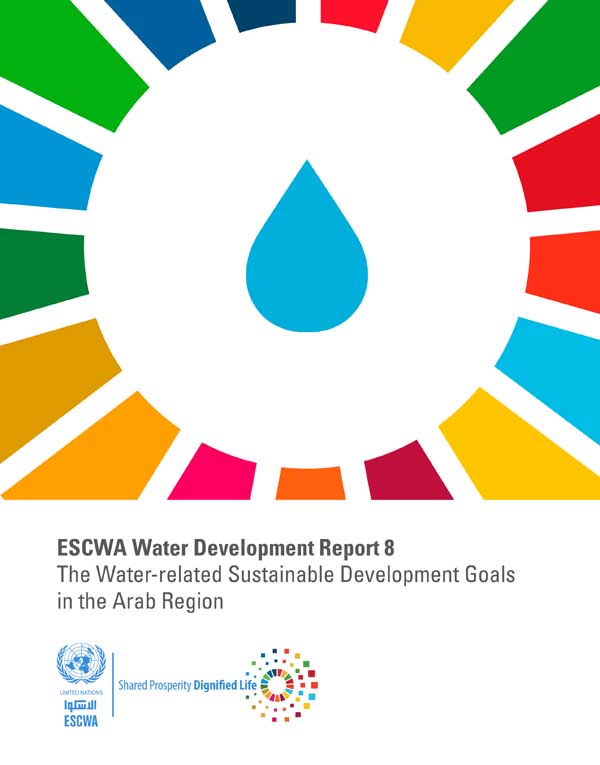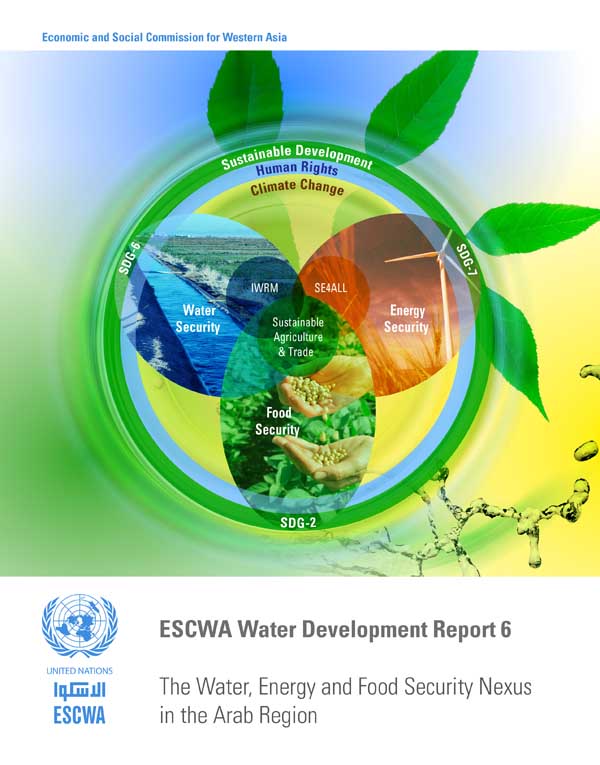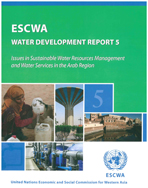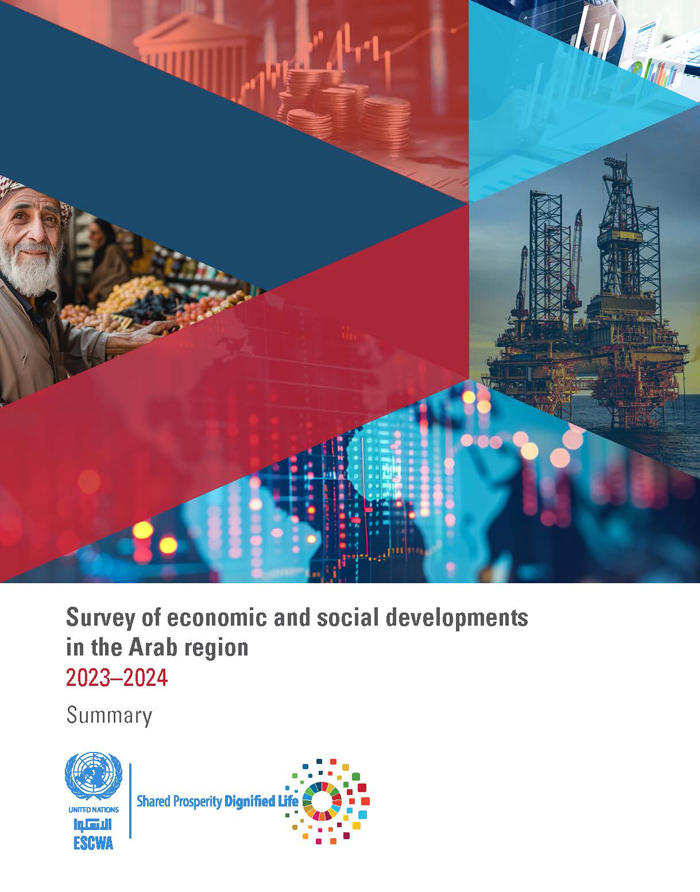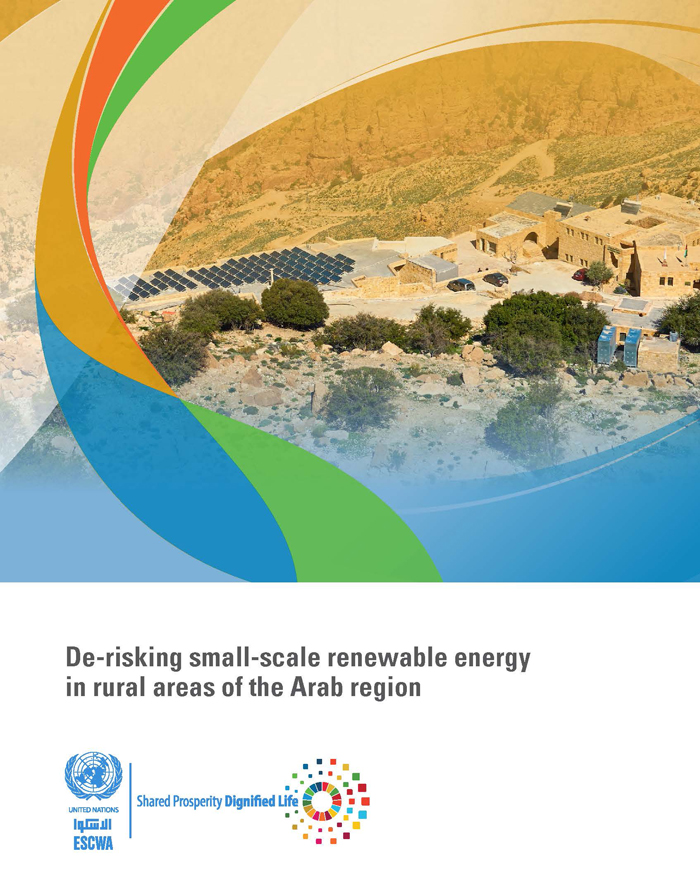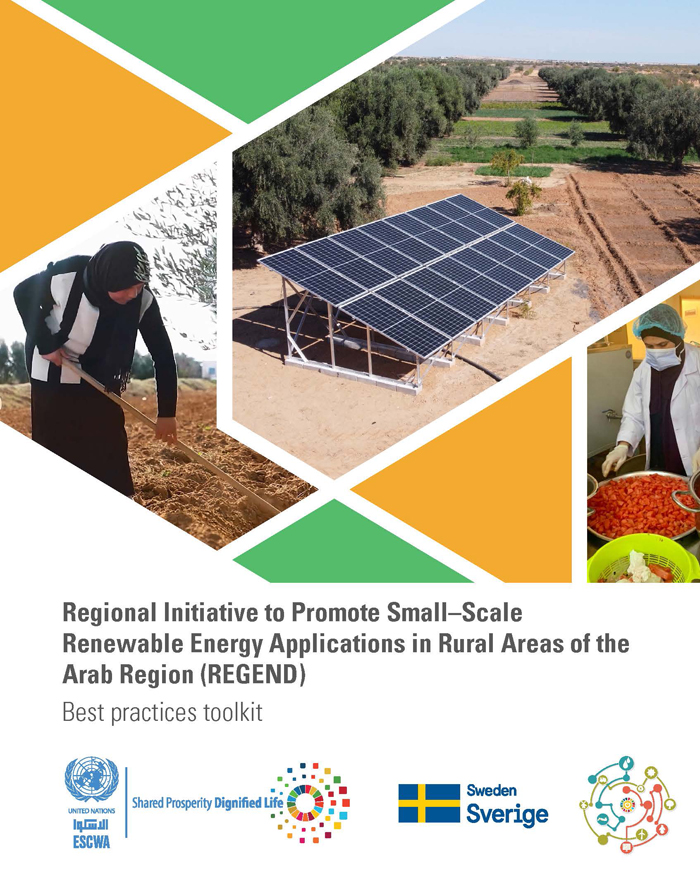
ESCWA Publication: E/ESCWA/SDPD/2017/3
Publication Type: Reports & studies
Publication Subject: ESCWA Water Development Report
Cluster: 2030 Agenda and SDG Coordination
Focus Area: 2030 Agenda, Natural resource sustainability, Climate change
Initiatives: RICCAR
SDGs: Goal 2: Zero Hunger, Goal 6: Clean Water and Sanitation, Goal 7: Affordable and Clean Energy, Goal 13: Climate Action
Keywords: Climate change, Disaster preparedness, Disaster prevention, Risk assessment, Sustainable development, Water resources
ESCWA Water Development Report 7: Climate Change and Disaster Risk Reduction in the Arab Region
January 2018
Since 2005, several global processes have called for an integrated approach to climate change adaptation (CCA) and disaster risk reduction (DRR). Calls to pursue this integration were intensified, with the adoption of three main and interrelated agendas, namely the 2030 Agenda for Sustainable Development, the Sendai Framework for Disaster Risk Reduction (2015-2030) and the Paris Agreement on Climate Change. While the CCA and DRR communities follow separate paths, bridging the gap between them entails both opportunities and challenges. Similarities between the two communities need to be exploited and differences investigated in order to achieve synergies in dealing with all aspects of weather-related hazards and disasters, assessment tools, institutional arrangements and means of implementation to achieve synergy between the two agendas.
This seventh issue of the Water Development Report of the Economic and Social Commission for Western Asia (ESCWA) focuses on bridging the gap between CCA and DRR communities within the context of scarcity in the water sector in the Arab region at large. It attempts to link historical disaster loss databases with the projected extreme indices hotspots and vulnerable areas that resulted from the joint United Nations and League of Arab States Regional Initiative for the Assessment of Climate Change Impacts on Water Resources and Socio-Economic Vulnerability in the Arab Region (RICCAR). The report utilizes the science-based information generated from regional climate modelling, hydrological modelling, vulnerability assessment and analysis of the disaster loss databases to inform measures and actions on CCA and DRR at the regional and national levels as well as climate change negotiations at the global level. To improve policy coherence across CCA and DRR communities in the Arab region, there is a need for increased regional and country-level efforts to overcome the continuing challenges related to climate change, natural hazards and water security, which hinder the achievement of sustainable development in the region.
Related content
2030 Agenda
, Natural resource sustainability
, Climate change
,
Since 2005, several global processes have called for an integrated approach to climate change adaptation (CCA) and disaster risk reduction (DRR). Calls to pursue this integration were intensified, with the adoption of three main and interrelated agendas, namely the 2030 Agenda for Sustainable Development, the Sendai Framework for Disaster Risk Reduction (2015-2030) and the Paris Agreement on Climate Change. While the CCA and DRR communities follow separate paths, bridging the gap between them entails both opportunities and challenges. Similarities between the two communities need to be exploited and differences investigated in order to achieve synergies in dealing with all aspects of weather-related hazards and disasters, assessment tools, institutional arrangements and means of implementation to achieve synergy between the two agendas.
This seventh issue of the Water Development Report of the Economic and Social Commission for Western Asia (ESCWA) focuses on bridging the gap between CCA and DRR communities within the context of scarcity in the water sector in the Arab region at large. It attempts to link historical disaster loss databases with the projected extreme indices hotspots and vulnerable areas that resulted from the joint United Nations and League of Arab States Regional Initiative for the Assessment of Climate Change Impacts on Water Resources and Socio-Economic Vulnerability in the Arab Region (RICCAR). The report utilizes the science-based information generated from regional climate modelling, hydrological modelling, vulnerability assessment and analysis of the disaster loss databases to inform measures and actions on CCA and DRR at the regional and national levels as well as climate change negotiations at the global level. To improve policy coherence across CCA and DRR communities in the Arab region, there is a need for increased regional and country-level efforts to overcome the continuing challenges related to climate change, natural hazards and water security, which hinder the achievement of sustainable development in the region.
